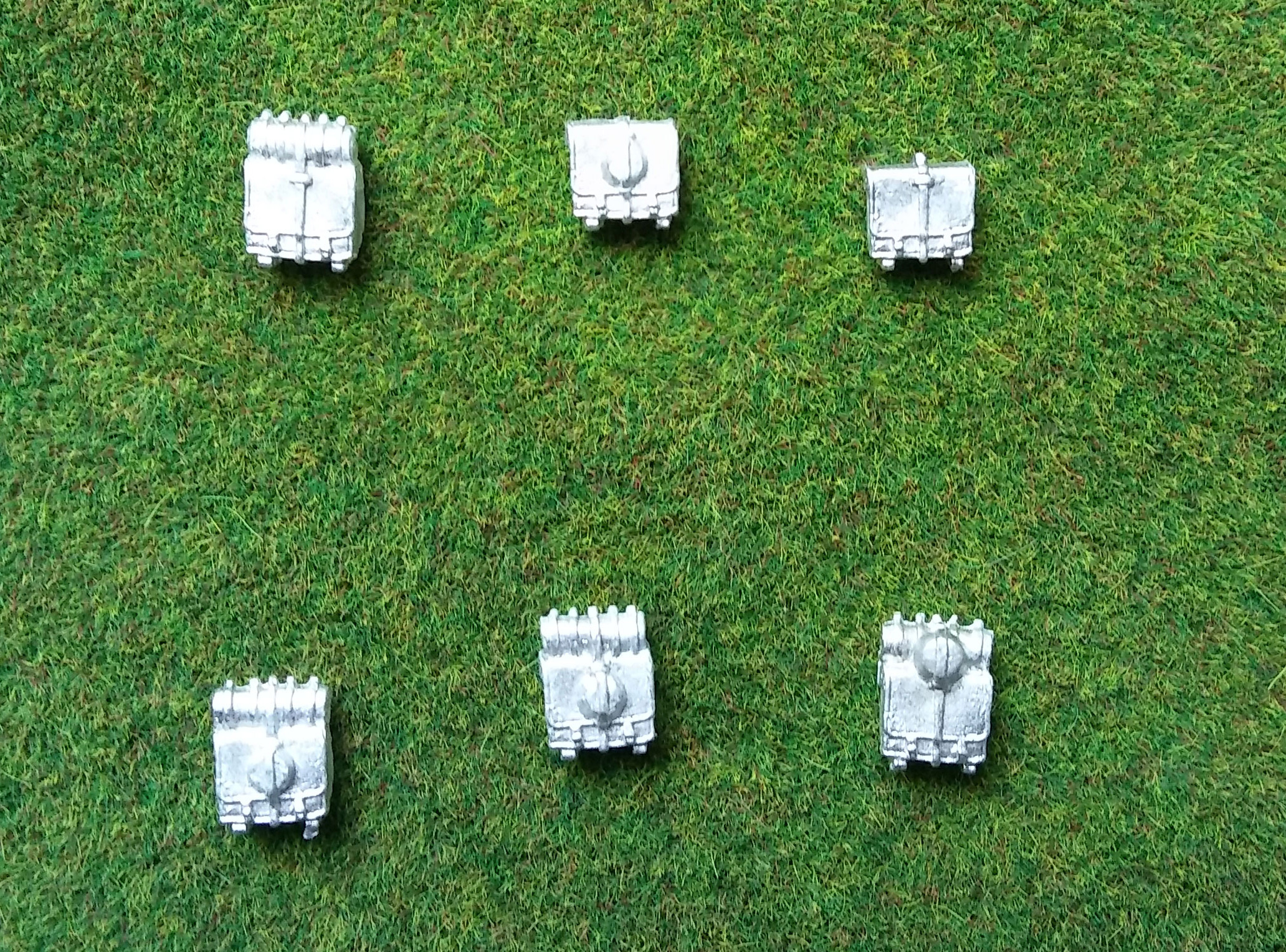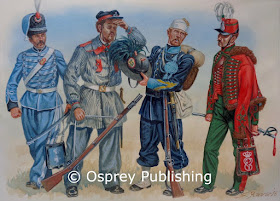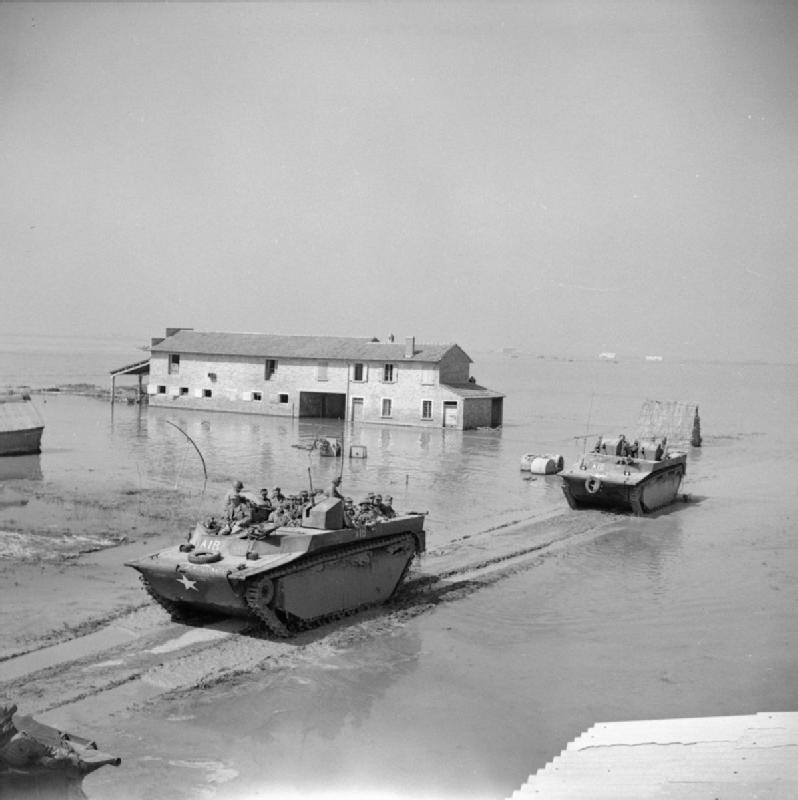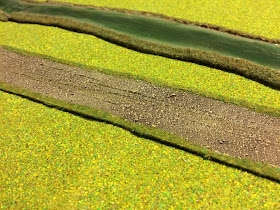Today, I'll focus mainly on the role of the infantry on the battlefield in Lion Rampant, the medieval wargame rules by Dan Mersey.
The
Middle Ages features a pretty static infantry: except fiece foot, who
were mainly found at the fringes of European territories, the standard
infantry unit deployed in a static defensive spearmen armed formation.
The main aim was to resist the assualts of enemy's cavalry: superb
knights, sergeants or arabs mamelukes. Occasionally they could face some
barbaric infantry, classed as fierce foot (let apart for a second the
possibility to grade as fierce foot halberdier or sword and buckler, we
will come back to this later).
During Dark Age, the
situation was similar: the Roman infantry lacked the might of the past,
and the Barbarian Infantry, often of low quality (levy, better
represented as foot yeoman, IMHO) was used as a rally point for noble
cavalry, according to Procopius. Even in the East, against Sassanid, the
battles were mainly fought between opponent cavalry.
Things
become very different when talking about Classical Antiquity, between
the classic Greece and the Roman Empire (principate at last), the
infantry was the key of the battles, with cavalry often considerated an
auxillary corps, at least until 3rd century AD. With the rules, as they
are written, you cannot simulate this in any realistic way. So we must
deal with Classical Antiquity separately (i.e. in a other post!)
So, back to Infantry in Middle Ages. In my humble opinion, there is one main issue. Two infantry units (segeants or yeomen) facing
each other, causing a situation in which no one wants to attack, because
the attacker rolls 5+ and defender 4+. I can see the logic of this: we
just said that during this period sergeants formed a defensive formation
and all that stuff. But, in some particular context, if you're fielding
pretty specular armies (for example two Communals
Italian armies) I'd advide to allow a sort of incentive the clash of
infantries
that happened frequently during the period. It's true (and a bit
hollywodian as the author likes) that infantry stood in front of enemies
knights, but infantry lines often clashed.

The author
probably decided that the variety and interplay of arms would avoid such
situations, and it wanted us to focus on different arms, so adding a
cavalry unit, or a foot man at arms or a fierce foot unit (not very
common during the feudal age), could break the balance, and in most
games, this will work. But mono-dimensional armies exist, even if the
rules allow you to field max 12 points or 4 units of any determined kind
of unit, but nothing could prevent you to field 3 sergeants units
and/or foot yeoman units.
During our game, however, sometimes happened (maybe the knight ran away or were deployed at the other side
of the battlefield, or whatever) that two units of foot sergeants stood
watching each other for an entire game, none of them (rightly) wanting
to lose their advantage charging the enemy.
According to rules can
give an offensive edge to your sergeants (and yeomen), making them "offensive" : spending 2 points more, the unit's attack become 4+
instead that 5+. Anyway, I think tthat 2 points for +1 attack is too expensive.
What should we do?
- nothing, the troops variety or at least the difference in armour would break the balance.
- add a scenario optional rule, "Guelphs and Ghibellines":
foot sergeants and yeomen gain +1 to dice rolled when attacking enemy's
foot sergeants and yeomen for no cost. It could break the empasse. Use
sparingly only in symmetric games (and under supervision of your
parents).
Of course the latter option would diminishing the cost-effectiveness of purchasing offensive sergeants (still attacking 4+ on every
enemy unit), but I already consider 2 points a bit too much for +1 when
attacking. It's not even useful to break the balance, since the attack and defence are equal in sergeants or yeomen, but you can
field 3 units vs 2. If the players with three static sergeants sits
down, the offensive minded player will soon finds his men are too few to
disrupt 3 enemy's units.
And this is the first issue
of Medieval Warfare that could need a fix. Bear in mind I just proposed
one of the possible solutions.
Second issue: where are the halbardiers and (later in period) sword and buckler men?
Well, that's an interesting topic: in the rules there are two ways to portray them:
- use offensive foot sergeants or yeomen (the unit costs +2 points)
attack and defend on 4+ and lose schiltron, armour as the main unit (3
or 2).
- use fierce foot (4 points) attack on 3+, defend on 6, wild charge! armour 2.
I see none of these option is very used by our local club, why?
Offensive
foot (either sergeants or yeomen) are the best way to represent
halberdiers, in our opinion, because they retain their defensive
capabilities, but they cost too much. Fierce foot aren't really loved
because they're wild charger, and stay almost halplessy if they fail to
countercharge.
Possible solutions:
- offensive foot cost reduced to +1 point
- add a new upgrade for foot sergeants and yeomen (I really had sword
and buckler in mind when I wrote this) (I cannot think about an
appropriate name now, let's call them AlternativeOffensive), leaving the hot minded troops as fierce foot.
AlternativeOffensive@0points
The unit switch Attack with
Move and Attack Value with Defence value. It lose Schiltron special
rule, and gain Countercharge Infantry special rule.
So an Alternatively Offensive Foot Sergeants unit (Sword and Buckler for example):
Attack 5+ Attack Value 4+
Move 6+ Defence Value 5+
Shoot - Shoot Value-
Courage 4+ Armour 3 (2 if foot yeomen)
Max movement 6"
By
the way, this is exactly how I would represent Early Migration (i.e.
Early Dark Age) infantry in those people still using massive infantry
charges, instead that relying on cavalry for their attacks (the
latter are often referred as Sarmatized Germans). Of course I would also
represent in the same manner Celts infantry during Classical Antiquity.
But I think this post is already long enough and I shouldtalk about them an other
time.









_-_First_Ancient_Greek_lion.jpg)











































